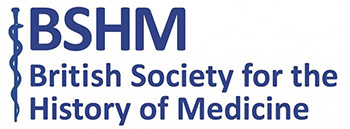2019 marks 50 years since the advent of fibre-optic colonoscopy. This blog discusses the development of this widely used technique and associated technology, and its impact on modern medicine.
Colonoscopy is a technique that allows direct visualisation of part of the large intestine (the colon). A flexible tube (endoscope) with a light source is inserted into the anus and images from the inside of the colon are projected onto a monitor. As well as being used for diagnostic purposes, colonoscopy can also be therapeutic, for example allowing for the removal of pre-cancerous growths.
The technique of modern colonoscopy is largely thanks to the work of several doctors in the 1960s and 1970s. The fibre-optic colonoscope was developed by Dr Niwa and Dr Yamagata at Tokyo University. Two physicians based in America, Dr William Wolff and Dr Hiromi Shinya, then pioneered its use, performing the first modern colonoscopies in June 1969. They described ‘over 1000 successful and totally uncomplicated endoscopic examinations’. The colonoscope, unlike the flexible sigmoidoscope, allowed for visualisation of the complete colon. Wolff and Shinya later developed and started using an electrosurgical polypectomy ‘snare’ to remove polyps. They published a seminal paper in 1973 demonstrating the utility, safety and cost-effectiveness of colonoscopy. The practice of colonoscopy increased during the 1970s and 80s, facilitated by the associated public exposure when President Ronald Regan underwent several colonoscopies to remove polyps in the mid-1980s. The New York Times quoted the advice given by Ronald Reagan’s surgeon who stated that the president should ‘undergo an examination of his intestines, a colonoscopy, within six months and every year after that, as well as periodic blood tests to check for possible colon malignancy’.
So how has colonoscopy changed over the past few decades? Well, to be truthful, not much! The technique is very much the same. However, the instruments used today are more flexible, making them easier to manipulate. This allows for better visualisation of the colon and reduces the amount of time needed to perform a colonoscopy.
Colonoscopy is essential in the diagnosis of bowel cancer which is the fourth most common cause of cancer in the UK. It is used for both the surveillance of patients with previous bowel cancer or significant risk factors, and in screening for bowel cancer. Colonoscopy can also be therapeutic. It can facilitate the removal of lesions and the cessation of bleeding in the bowel, through electrocoagulation, injection therapy and the use of special clips secured over bleeding blood vessels.

Endoscopic examination of a patient’s gut by Dr A.I. Morris, Royal Liverpool University Hospital. Drawing by Julia Midgley, 1998. Wellcome Images.
Improvements in optical imaging have already increased the quality of the images seen on the monitor as a colonoscopy is being performed. Higher definition images mean more subtle lesions and even small polyps can be visualised. Less invasive imaging modalities, such as virtual colonoscopy (computed tomography colonography) and capsule endoscopy, have been developed as potential options for those who are unable to undergo a complete colonoscopy.
Many believe that colonoscopy will grow to play a bigger therapeutic role in the future. Watch this space…
Further Reading
William Wolff and Hiromi Shinya, ‘Polypectomy via the Fiberoptic Colonoscope,’ New England Journal of Medicine, 288, No.7, February 15 1973, pp. 329-331.
Bernard Weinraub, ‘Reagan’s Doctors Find Cancer In Tumor But Report Removal Leaves His Chances Excellent,’ The New York Times, July 16, 1985. Available at: https://www.nytimes.com/1985/07/16/us/reagan-s-doctors-find-cancer-tumor-but-report-removal-leaves-hischances.html
Lucy Havard






